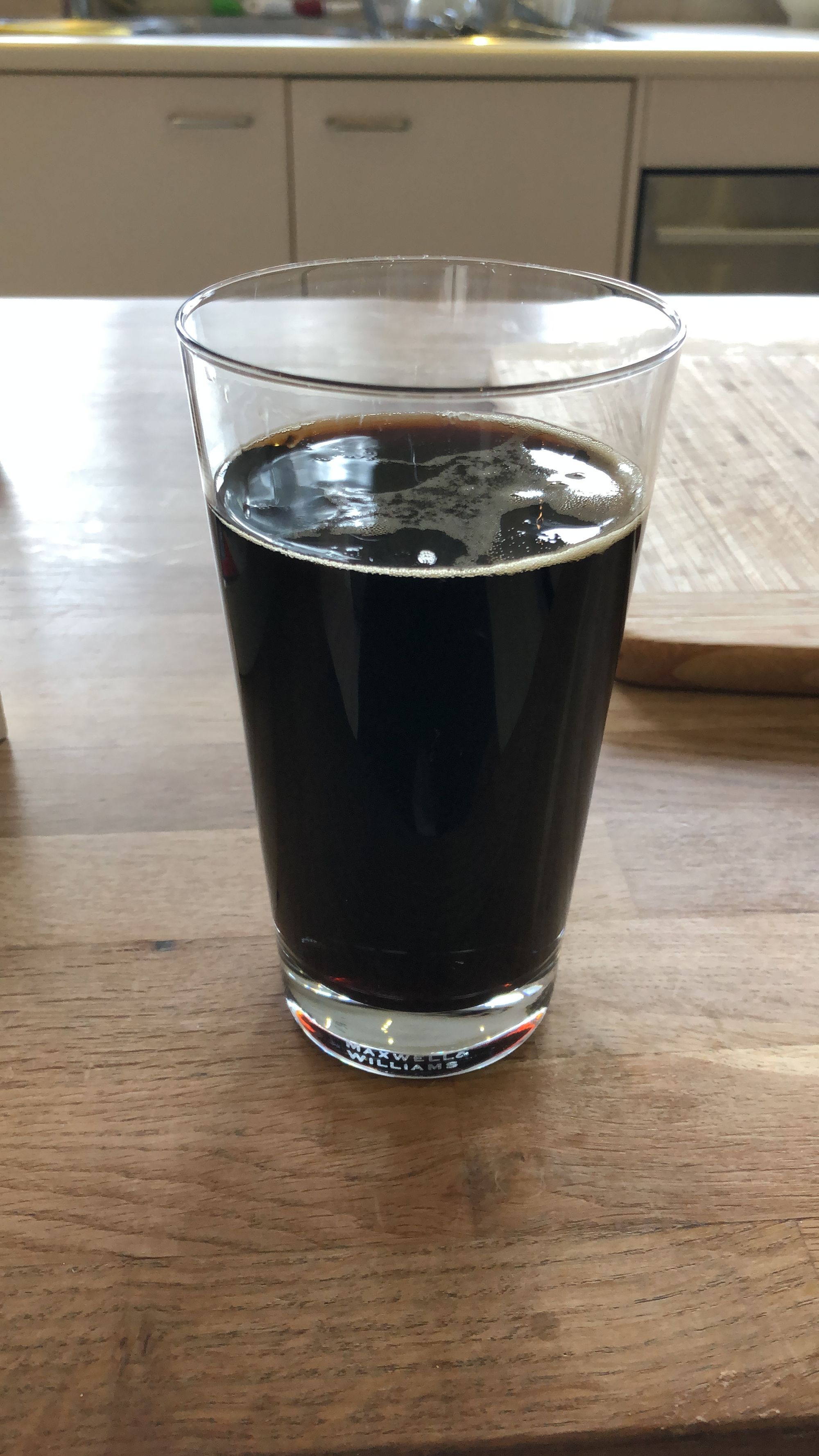Brew 3 and 4 first tastes

In preparation for the not-bottling of brew 4's homemade Pale Ale I removed the brew 3 Miner's Stout from the conditioning fridge and packed it away into boxes for a while to mature...except one bottle, which was put into the cold fridge to chill.
I know it's early - I've been told this will get better for the next few months, at least - but I think it's good to test the beer at different stages to make sure I'm not setting myself up for disappointment in the future.
This was bottled on 14th June, so it's about three weeks old. It was the first time I'd racked to/bottled from the Fermentasaurus.
Clearly, it doesn't have a Guinness-like foamy head, but, for an immature beer, this tasted pretty good.
The carbonation was actually pretty good. There was a bit of fizz to it, but only what you'd expect from a stout. The lack of head is in part due to my very careful pouring - there was quite a bit of sediment in the bottom of the bottle.
Anyway, a very enjoyable drink and I'm looking forward to tasting how this improves over time. I will be putting another bottle in the fridge for next week.
However, towards the end of the bottle, I started to notice a clove-like taste. It wasn't unpleasant or over-powering, but it made me concerned because that is exactly what I tasted in the homemade pale ale. The two beers have nothing in common - different wort, different process, different hops, different yeast. There is literally no reason why this stout should taste anything like the pale ale (the clue is in their names!). So what's going on?
A quick Google search confirmed that the source of the clove flavour is certainly yeast, but it could be stress on the pitched yeast, or an unintended wild yeast infection.
The yeast I'd used for the homemade Pale Ale was Safale US-05, and this seemed to come up a few times in my searches. But the Miner's Stout used the kit yeast. Also, the flavour in the Stout is (from memory) much less than the PA.
Stressing the pitched yeast can cause these effects, and I'm a novice brewer, so this could be the cause. Other possible causes could be my water source; or residues left by the detergent I'm using to wash the fermenters after each use (Earth Choice Ultra Concentrate Green Tea & Lime Dishwashing Liquid). Or is it a wild yeast infection?
The two brews used different fermenting vessels, including for racking and bottling. The clove flavour is much more intense in the homemade pale ale than in the stout. The stout preceded the PA, so could it be I've accidentally cultivated a wild yeast that's now rampant in the brewery?!?
According to this source, wild yeasts can generate "Phenolic compounds", but...
...most of these are not the commonly accepted clove or spicy aromas and flavors, but a strong medicinal band-aid-like flavor which is not pleasant at all.
I wouldn't say the clove flavour is unpleasant, but it's potentially hiding the Columbus hop and other flavours that are supposed to be there.
I've concluded that, whatever it is, I need to be extra vigilant with my cleaning and sanitising.
But...just to be sure, I had a sneaky taste of the brew 5 Amber Ale to check if there were any hints of clove. This is my first homebrew to use the Fermentasaurus. It's been there for a few weeks, and I used the Safale US-05, so it should be showing clove-ness by now if it's infected. The stout was actually racked to and bottled from this vessel, which could have been a source of contamination, too, if something nasty was lurking. This would test my cleaning and sanitising skills.
And...nothing. It tasted exactly as I would expect room temperature, flat amber ale to taste. No hint of clove - just all beer.
So, I can confidently say that my investigations are inconclusive. The stout is very drinkable and will either improve with time (if the good yeast clean up the Phenols) or deteriorate (if a wild yeast strain creates more). The amber ale shows no signs of clove flavours, and I hope it stays that way. This will be transferred direct to a (heavily) sanitised keg under pressure via tubes, so that will be a good test of whether the yeast is in the brew already.
Also...shows how important it is to taste regularly :)




